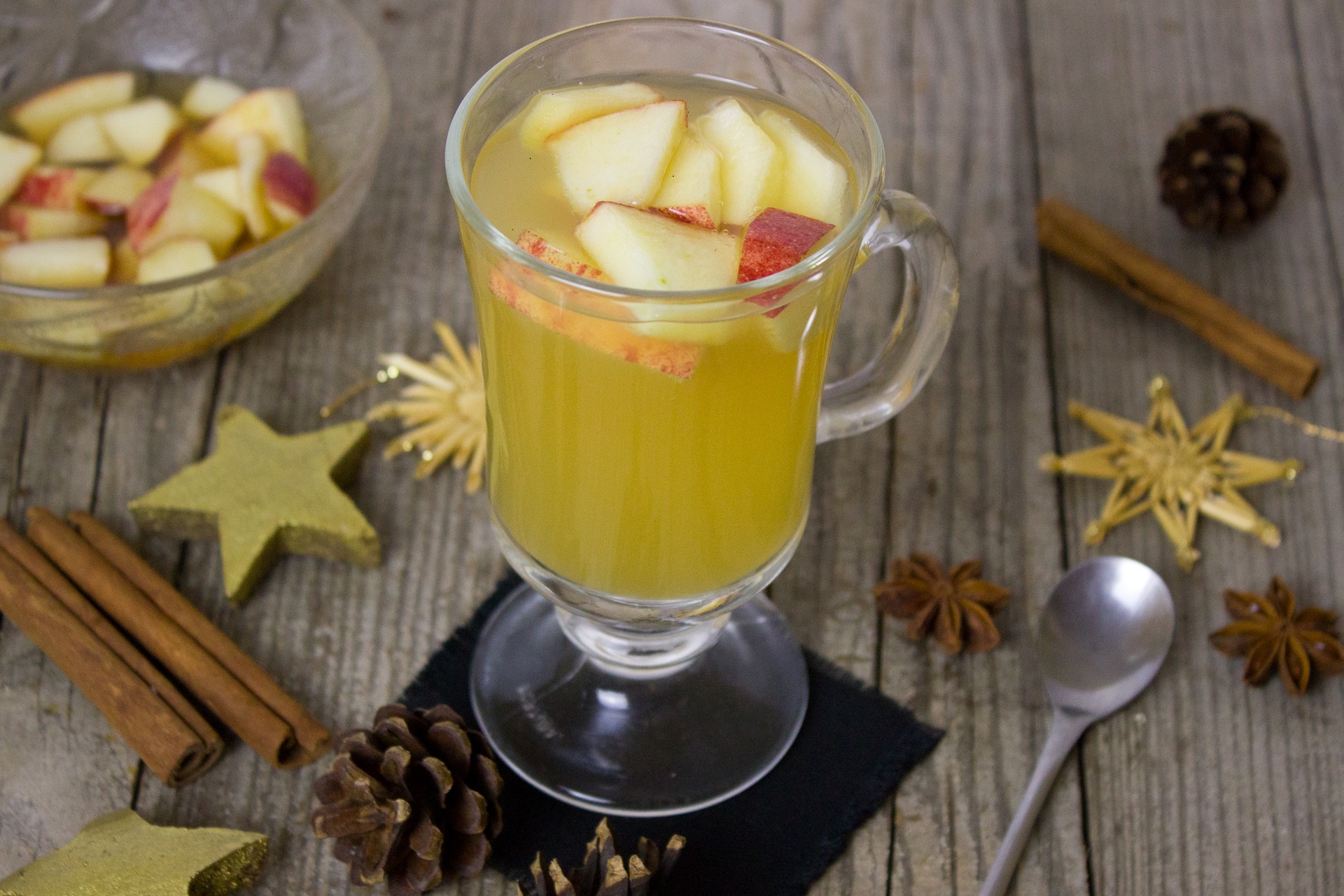As promised, here is one more apple post for the year – and a thank you to a miss Jennifer Cole for suggesting it: the difference between apple cider and apple juice.
We’ve already explored the history of apple cider – let’s find out how it differs from its more readily available counterpart.
To put it simply, apple cider is defined as fermented apple juice. Another way to look at it would be to say that cider is unfiltered apple juice. But of course we can’t just stop there.
Let’s first look at the similarities between the two. Apple cider and apple juice both:
- Begin as raw, pressed juice from crushed apples.
- Can undergo a process of pasteurization.
- Have very similar nutritional properties.
Indeed, apple cider and juice differ just slightly nutritionally. They both:
- Have 120 calories in 8 ounces.
- Have no fat or saturated fat.
- Can reduce the risk of heart disease and cancer.
Furthermore, apple cider and apple juice contain the same amount of calories, carbs, Vitamin C, fiber, and potassium. The sodium levels can differ, but they’re both low levels.
Cider and juice do vary in their sugar content, which is their most un-healthful element.
Cider inches ahead of juice just slightly nutrition-wise.
Apple cider contains iron and calcium where juice tends to have none. Also, supposedly the cloudiness of apple cider lends to more antioxidants than clear juice.
Additionally, many argue that cider has to be better for you than apple juice, which is much more likely to contain artificial flavors and other additives.
Now, let’s get into the nitty gritty of it.
Apple cider:
- Is often made from early-harvest apples.
- The apples used tend to have a lower sugar content and yield to a more bitter taste.
- Can be alcoholic – “hard cider.”
- Contains pulp and sediment from the apples, giving it a cloudy appearance.
- May or may not be pasteurized.
- If it has not been pasteurized, it can ferment over time, giving it a short shelf life.
Apple juice:
- Has been filtered to remove solids; it’s clear.
- Is sweeter than cider.
- Is never alcoholic, or fermented.
- Is always pasteurized.
- Has a longer shelf life than cider.
To add another level of complication to the difference between apple cider and apple juice – sometimes apple juice can be labeled as apple cider for marketing purposes.
In fact, the USDA does not provide a legal definition for apple cider, and so its meaning can vary from region to region.
Generally though, apple cider is a thick juice that is not always pasteurized, may be alcoholic, and has both a sweet and tart taste. Apple juice is cider that has been filtered, is always pasteurized, and has a sweet flavor to it.
And, apple juice is not alcoholic, much to the relief of moms everywhere.

Comments
One response to “Difference between: apple cider and apple juice”
Awesome! How fascinating that the USDA does not have any clear definition!